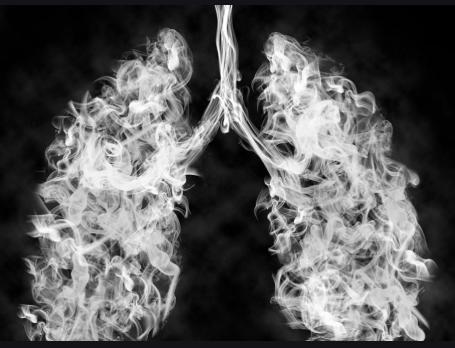The CDC just issued a report, providing more information about what has been killing and hospitalizing people who vape. It's pretty much what we were saying last month. We (the kettle) defied a dreadfully trite old saying by calling the pot black. It looks like we got it right.
According to the CDC (1), people who were harmed and killed were using the vaping devices to inhale THC. There have been 36 reported vaping-related deaths in the US; 29 of these were included in the CDC report. In 19 of the 29 deaths, there was enough data to determine what was smoked prior to death:
- Sixteen reported that they used the vaping devices to inhale THC, the psychoactive ingredient in marijuana, or nicotine.
- Twelve reported that they used only THC.
- Seven reported that they inhaled nicotine plus something else.
- Three claimed that they vaped only nicotine.
However, this does not mean that it was THC that caused deaths or lung injuries.
"The data do continue to point towards THC-containing products...[b]ut I'd like to stress that we don't know what the risky material or substance is. THC may be a marker for a way that cartridges were prepared or way that the devices are producing harm."
Dr. Anne Schuchat, CDC's principal deputy director
My bet is that an additive in the vaping "solution," possibly Vitamin E acetate, is the culprit. Back in September, my colleague Alex Berezow (See Everything Goes To Pot: Myths Are Driving FDA, CDC Vaping Policy) and I published companion pieces (See Can Chemistry Explain 'Vaping Lung?') in which Dr. Berezow criticized that FDA for conflating the safety of the devices with marketing e-cigarettes to children; and I explained that when a mixture of two miscible liquids (toluene and acetone) is distilled the lower boiling liquid (acetone) will boil first followed by the higher boiling liquid once the temperature is raised. But when two immiscible liquids are distilled (toluene and water) a messy mixture of both will boil at a temperature that is lower than either of the components alone (Figure 1):

Figure 1. A comparison of the distillation of two miscible liquids and that of two immiscible liquids (aka "steam distillation."
Since THC is insoluble in water, would-be chemists were putting additives into the vaping liquid to try to make it soluble. One of the additives was vitamin E acetate, an especially poor choice because (Figure 2):
- It is also insoluble in water
- It won't solubilize THC; it might simply emulsify it (2).
- It is fine to swallow it as a vitamin supplement, but it is not fine to inhale.

Table 1. Aqueous solubility and boiling point of three chemicals used in vaping.
If anything, the trend in Table 1 is probably more supportive of the theory that THC (and whatever may be added to it) is the culprit. This is because of "selective reporting." People in states where marijuana was illegal tended to claim that they used only nicotine, while people in states where marijuana is legal we more likely to admit that they used THC. Although self-reporting almost always blurs the conclusion of any epidemiological study, in this case, it probably makes it stronger. If some or all of the "nicotine-only" group had been using THC but did not want to admit it, then the data would provide a stronger case that cartridges containing THC/additives, were responsible for most of all of the deaths, not nicotine. (3)
THE BOTTOM LINE:
- Billions of e-cigarettes have been "smoked" without doing the kind of acute lung damage (or failure) we see now.
- As marijuana and its chemicals are becoming legal more people are using e-cig devices to deliver marijuana to their lungs.
- There are now more than 1,600 cases of lung damage.
- This is unlikely to be a coincidence.
- And none of this information is suggesting that e-cigarettes shouldn't be used for the purpose of smoking cessation. No matter the absolute risk of e-cigarettes, they are safer than cigarettes and by a lot.
Although this strange and severe lung damage is new, here's one thing that isn't: if you buy drugs on the street, which may have been made in the garage by someone with little or no chemistry knowledge, you never know what you'll get.
NOTES:
(1) I relentlessly criticize the CDC for its improper (and probably illegal) involvement in formulating drug policy, particularly that of opioids. But the agency usually does an excellent job of tracking down epidemics of infectious diseases and poisonings.
(2) An emulsion is a (more or less) homogenous, non-opaque mixture of two immiscible liquids. Sometimes emulsifying agents are added to keep the mixture from separating into layers. Milk is an emulsion.
(3) There is also a paper that suggests that some kind of toxic liquid or gas is responsible for the lung damage we are seeing. Although this CDC report implicates THC, it does not rule out other additives. But what could it be? (See What's Killing Vapers? A Conversation With Steve 'The Mad Chemist')




